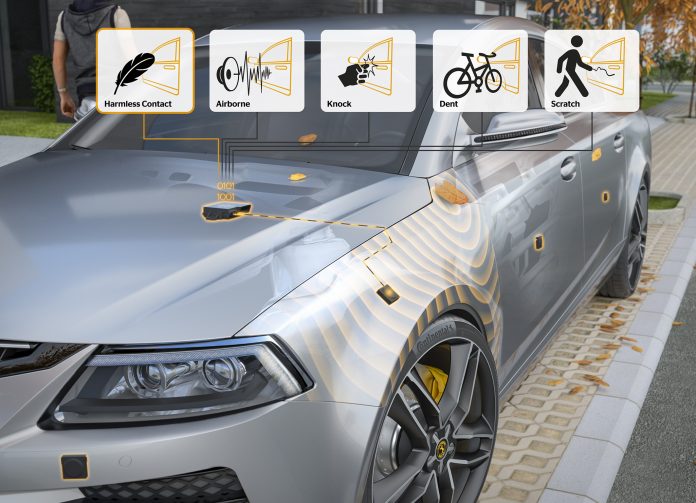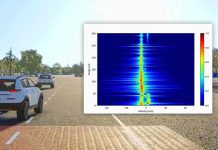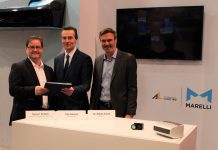- World premiere at the CES Las Vegas: Continental presents a new modular and scalable contact sensor to detect scratches and damages
- The miniaturized Contact Sensor System (CoSSy) sensors pick up the sound signal of low-speed impacts
- By differentiating between airborne sound, knocks, dents, and scratches the new sensor system can be deployed in multi-purpose applications, including vandalism detection
Technology company Continental is closing a gap in the industry’s automotive sensor portfolio through developing the new Contact Sensor System (CoSSy). This system detects low-speed contact between a vehicle and a person or an object. At the Consumer Electronics Show in Las Vegas, Continental demonstrates how CoSSy can help to make future use cases like automated parking even safer. Based on the sound signal picked up by CoSSy, a low-speed impact is detected so that the car can be brought to an immediate emergency stop. The new system provides a redundant signal path required by functional safety. It detects objects which may be located outside the short-range detection cone of other sensor types. The scalable CoSSy solution will typically include two to twelve sensors installed at relevant locations on the vehicle. Once installed, the CoSSy sensor signals can cover many more use-cases, such as the detection of vandalism (scratching) or low-speed parking incidents, because these types of touch are each characterized by a particular sound signature. Other supported functions are, e.g., road condition observation, an identification of the driver via voice recognition, or detecting approaching emergency vehicles. Even communication with the vehicle via touch could be enabled by CoSSy: A tap at the door by an authenticated driver would suffice to activate an automated door opening.
Why sound is essential
Structure-born sound has been used for many years in passive safety system architectures: Crash Impact Sound Sensors, which detect the sound of a physical impact, increase the level of confidence during a crash. Harnessing its many years of (crash) sensor expertise, Continental has developed a new miniaturized sound sensor, which is tuned to low-speed contacts.
In the future CoSSy could also provide an additional signal path to detect the road condition. The sound of water hitting the vehicle structure from below can be used to indicate the potential for hydroplaning. Depending on the future sensor design, airborne sound can be analyzed as well, which would help to detect approaching emergency vehicles – an important prerequisite for the type approval of automated vehicles. By utilizing the Doppler effect, CoSSy can also detect the direction of the approach, which is highly relevant to the driver.
The first generation of the new CoSSy solution can utilize structure-born sound as an indicator of contact with an object during automated parking. “This could apply to a situation when a person approaches the car without entering the detection cones of other sensors such as ultrasonic or radar. Even though this would be a rare thing to happen, the remaining risk must not be ignored for reasons of safety, especially at the beginning of an autonomous parking maneuver,” as Forster explains. As automated parking applications are expected to be widely available around 2022, the new sensor technology arrives just in time. The sensors deliver their signals to a central processing system which can be a dedicated electronic control unit (ECU) or it can be integrated into an existing ECU such as the airbag control unit.
Potential for many more use cases
Structure-born sound can be used as an information source for other applications as well. If a parked car gets dented or scratched, the CoSSy sensors can give the incident a time stamp. The sensor signal could also be used to wake up the appropriate camera to take a photo of the situation or to make the other driver aware of the contact by sounding an alarm or sending an information to a known smartphone. This would help to deter people from vandalism and to avoid unintentional hit-and-run situations. Rental car companies could easily check the car status as “undamaged” when the vehicles are returned.













